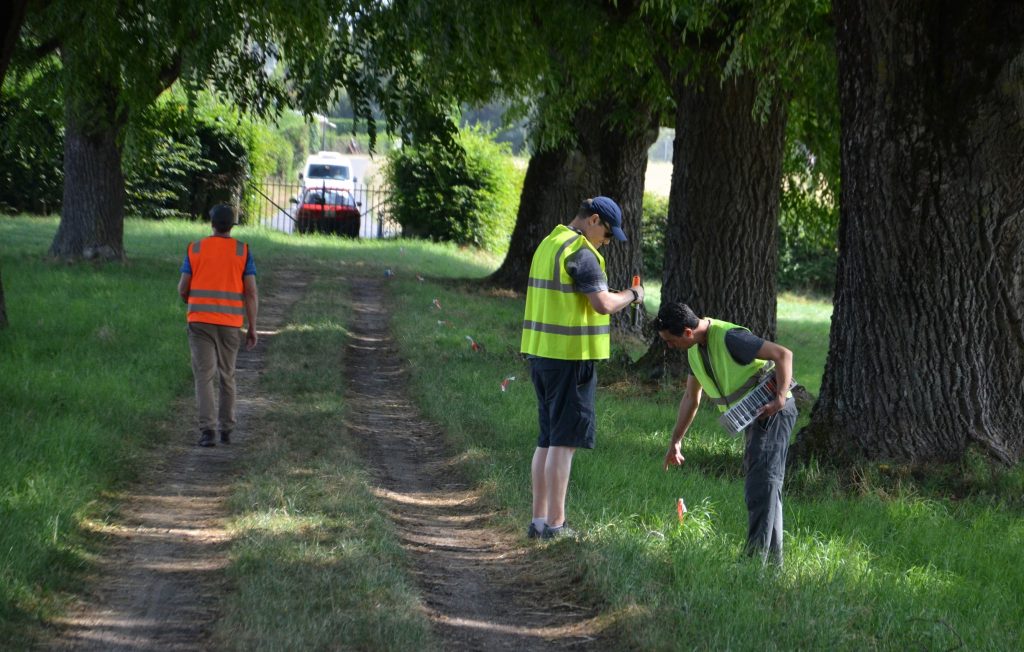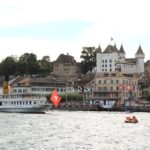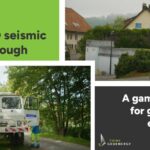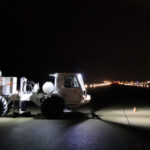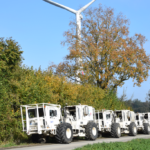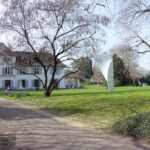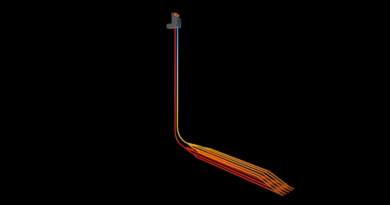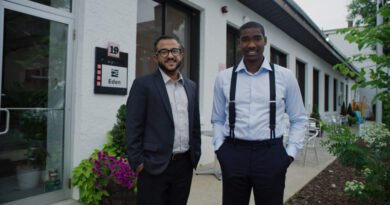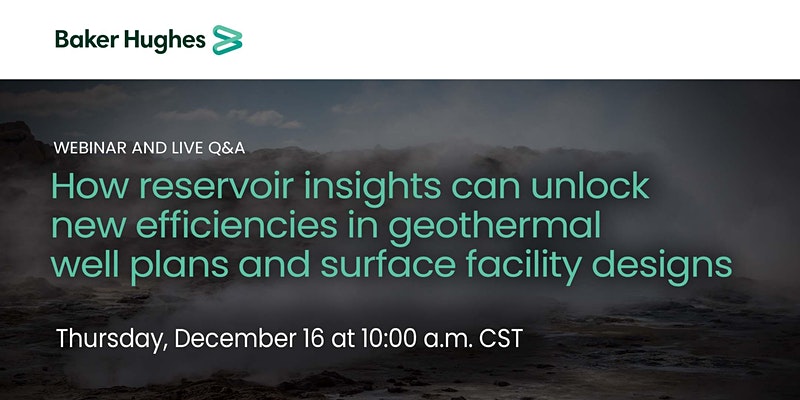Seismic sensors for geothermal, interview with CEO of STRYDE
Energy Disrupter
In this interview with Mike Popham, CEO of start-up STRYDE, we talk about the role of seismic studies for geothermal exploration and his company’s technology.
A few weeks ago, we reported on how seismic sensor nodes can help to speed up exploration for geothermal resources in the context of the company STRYDE. The company is a start-up spun out of BP as a separate company in 2019.
Always looking at how technologies can help push geothermal development we connected with the CEO of STRYDE, Mike Popham to learn more about the role of seismicity and his company.
In layman’s terms, how would you describe seismic studies and what do they do in the context of oil or geothermal exploration?
Seismic imaging essentially maps out the subsurface using sound waves bouncing back from underground rock structures. By analysing the different paths these seismic waves take and the speed they travel at, we can deduce the nature of those rock formations and their content which indicates the best places to drill or areas to avoid.
Most geothermal energy settings require water to flow through rock formation. High density seismic imaging gives you a better chance at identifying key rock properties like permeability and porosity as well as natural fractures, allowing developers to identify the best layers of the subsurface to inject water into and the best placement for the wells.
In addition, seismic studies can also help monitor microseismicity of a project once it is operational – which can be key to giving stakeholders confidence in project safety. When you inject water into porous rock, in some conditions, the rock might crack, resulting in minor earthquakes. Last year, a number of such earthquakes led to the closure of one of the first geothermal power plants in Europe. Seismic monitoring can provide project stakeholders and the local community with updates on the level of seismic activity from plant operations, and ultimately alert operators to any issues in advance.
What is the background of STRYDE’s work on seismic technology?
Members of the STRYDE team, myself included, initially began developing what has become the smallest, lightest, lowest cost seismic nodes on the market way back in 2013, when we were working inside bp. Our focus then was for oil & gas exploration and reservoir development – with the aim of creating an economic, safer 1 million node system. Fast forwarding to 2019, via a collaboration between bp, Rosneft and Schlumberger, we had proven the technology was indeed transformational. In late 2019 STRYDE was formed, with Launchpad our sole investor. We had a clear mission: make high density land seismic available to all industries who can benefit from seismic imaging.
O&G is very advanced in its use of seismic imaging, but it also has the capital to afford expensive nodes and cables and the support teams needed for installation. We aim to make seismic imaging accessible for our customers and enable them to access key insights into the subsurface that can greatly impact their operations. We do more than make higher quality seismic affordable though! Our technology also reduces the Health and Safety risks of acquiring seismic significantly, reduces the environmental footprint of a seismic survey and makes the whole survey faster.
Where has been your focus so far geographically? Which segments of the market has STRYDE targeted to date?
So far, Europe has been the centre of our geothermal efforts. New projects are being planned across a number of different countries and as such, developers are increasingly looking into seismic imaging. We have worked with clients in France, Belgium, and Switzerland to date, and are looking further afield to the UK, more EU nations, the US and Indonesia before the end of this year.
Geothermal energy can work anywhere in the world. To date, the main focus has been on high-enthalpy sites, where water is heated to boiling point in order to generate steam and power straight away – these sites are often co-located with known vents, which leads many to believe that geothermal only works in places like Iceland. However, a number of medium-enthalpy sites and low-enthalpy sites (which can be used to heat up a liquid with a lower boiling point to generate vapour/power or used for direct heating of buildings or greenhouses for example) can be developed as cost of exploration comes down and as subsurface imaging gets even more advanced.
Beyond geothermal, our seismic nodes have been used in 15 countries so far, with clients in oil & gas, mining, and even archaeology. We are open to working with companies, organizations, and towns and cities anywhere in the world.
When did STRYDE start working in geothermal, and how does your technology support geothermal exploration?
One of our first projects was actually in the geothermal space, with a company called GTG. When we spun off STRYDE, our first priority was looking for other markets that would benefit from this kind of seismic imaging. Geothermal exploration is actually very similar to O&G, with drilling techniques shared between industries and similar needs when it comes to identifying underground rock features and properties. As such, geothermal project contractors have been able to use our node without any modifications to the technology.
The size of STRYDE’s nodes is actually particularly well-suited for geothermal applications. Since geothermal projects – particularly at the lower-enthalpy end of the scale – work best when located near the end-user, our nodes are small and unobtrusive enough to be densely placed in urban environments. This also enables developers to model background noise from industrial and community activity, which can be used to even more clearly map out the subsurface.
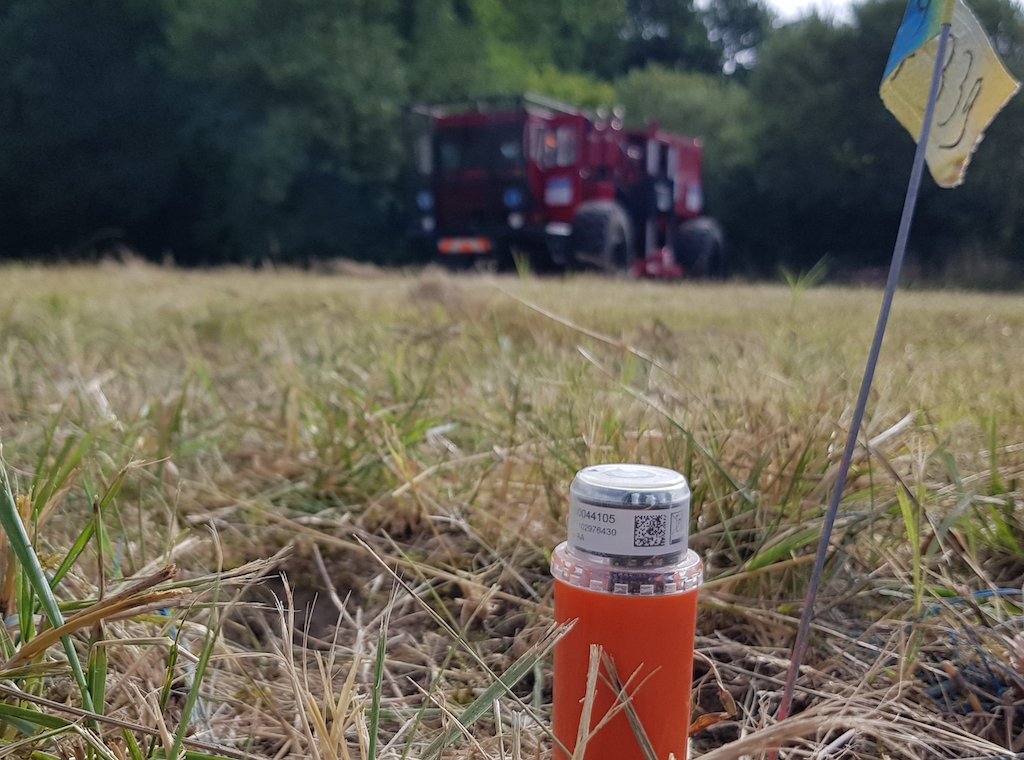
We traditionally see large seismic trucks used for large scale seismic studies in the geothermal sector. How do STRYDE’s nodes replace traditional (larger scale) seismic work, and what is the impact of reducing the size of seismic technology?
At the moment, seismic contractors in Europe primarily rely on larger, bulky nodes, rather than cables. Our node is only 150 grams, which is almost five times lighter than the next lightest node on the market. As such, our clients have been able to scale down the size and number of vehicles needed to transport nodes alone, which can drastically reduce the carbon footprint of a project’s development.
The STRYDE technology doesn’t remove the need for seismic sources which often come in the form of large trucks known as “vibroseis”. However, geothermal projects in urban areas are carefully planned to use these vibroseis at safe distances from buildings and moving them fast through the town to minimise disruption to the public, hence the importance of a nodal system that is nimble enough to not slow these sources down and maximise the efficiency of this type of urban surveys. We do believe there is potential for smaller, more portable sources for projects in more challenging environments and can see several companies working on such solutions already.
Another key development we can already offer as a result of our scaling down both the size and costs of seismic nodes is the ability to continuously monitor a geothermal project. Currently, nodes are mainly used during initial project development and then again in the event seismic events are being detected, but we believe that the seismic data for operational geothermal projects is invaluable. Our nodes are small enough and at a low enough price point that a thousand or so can be placed around a site and record continuously. Processing the data from this array can allow developers to spot problems, optimize the facility, and ultimately take learnings from that data to their next project.
STRYDE’s receiver in action in taiga forests in Russia.
[embedded content]
To learn more about the company’s technical offering, click here.


